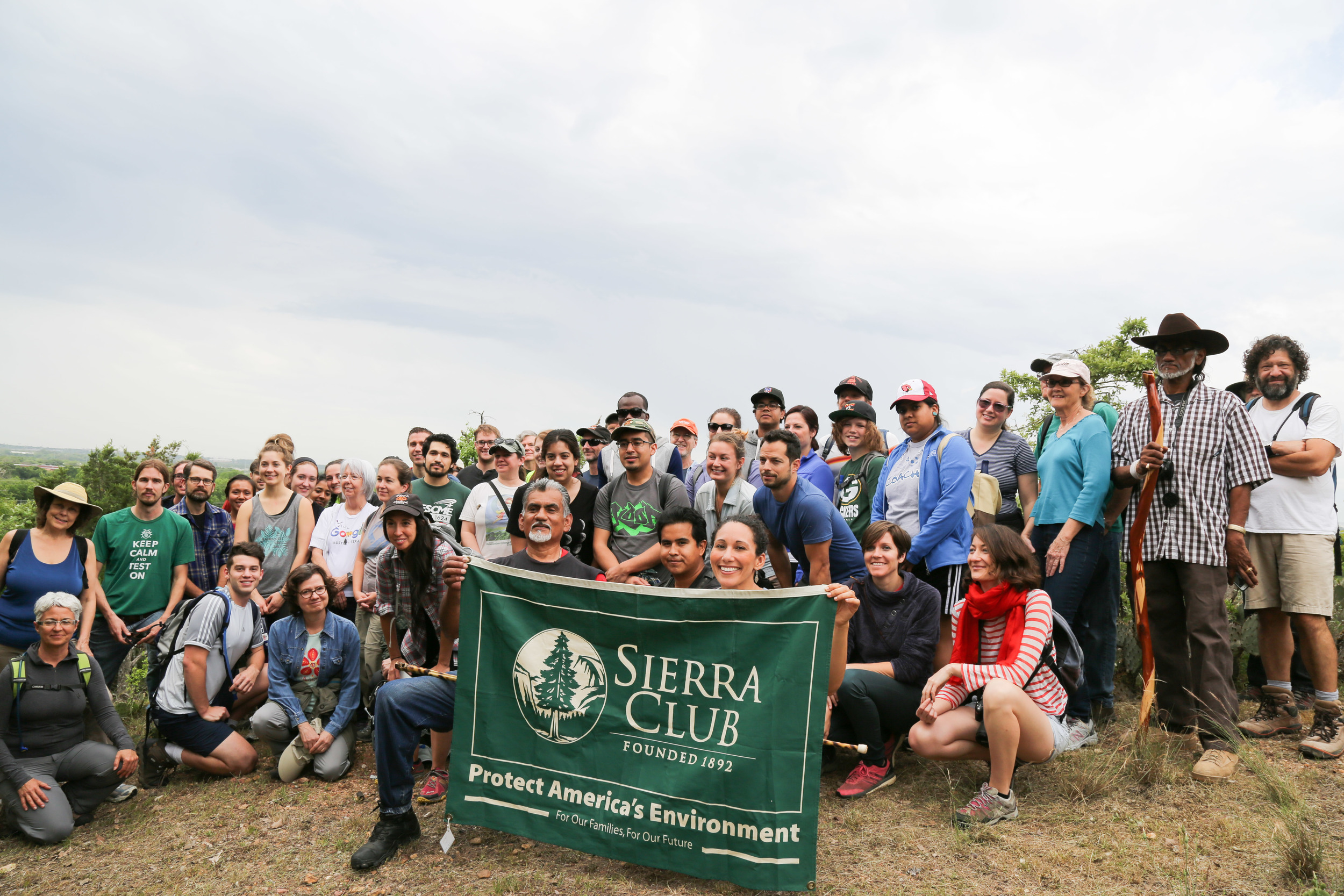By Vanessa Ramos & Max Anderson
Editor's Note: This piece was originally published on vanessarmarie.com
The Red Bluff vista in East Austin has been used as an illegal dump for half a century, but after tireless campaigning by neighborhood residents and local activists over the past two years the area is finally getting cleaned up.
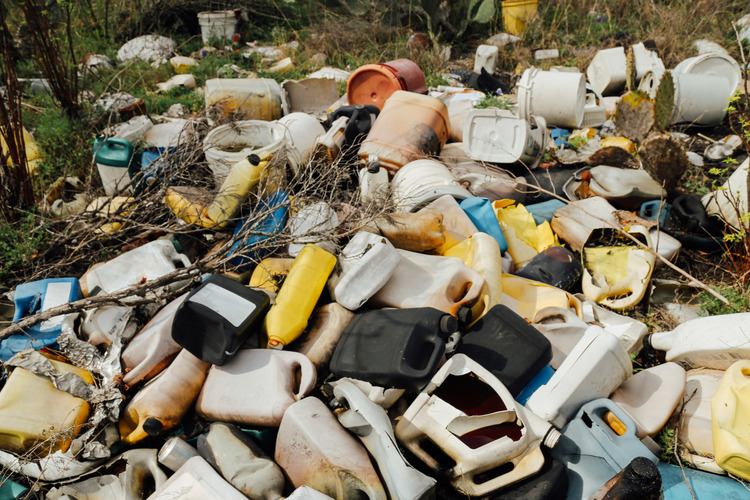
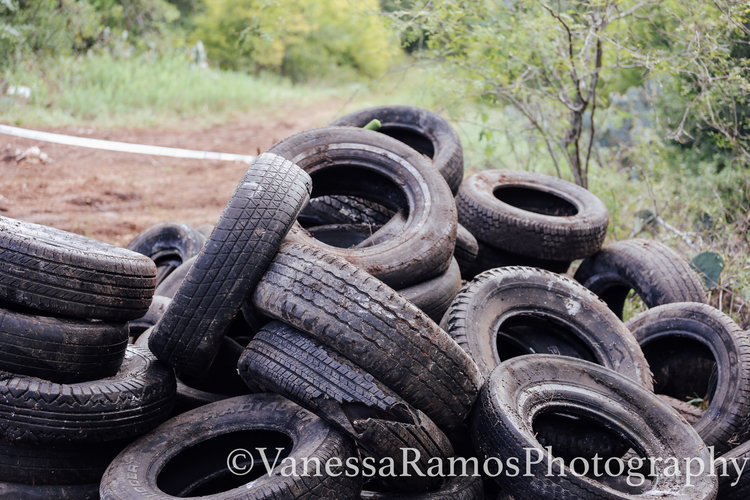
In late August, environmental consultants contracted by the City of Austin began a clean up operation to remove asbestos, oil containers, tires, roofing tile, lead based paints, auto parts and other debris from the area. There were 10 sites with debris that clean up crews had to remove. Although most of the sites were relatively small, two sites in particular posed big challenges. At the beginning of the trail the crews removed a large pile of oil containers full of oil. In another area debris was scattered across an entire field.
“It was really awesome to see the improvement after they picked up a lot of the debris,” said Pete Rivera, President of the Springdale Airport Neighborhood Association, SANA. “It’s a breath of fresh air to see all of this happening.”
Rivera started the neighborhood association, SANA, two years ago to address issues in his community, including safe trails for school children, local parks, environmental degradation, and gentrification. Rivera’s neighborhood is located in East Austin just West of 183 around Springdale Airport BLVD, and is situated in Council Member Sabino “Pio” Renteria’s district and borders Council Member Ora Houston’s district.
Rivera has partnered with the Sierra Club’s Environmental Justice Team, ATXEJ, to bring attention to the decades of illegal dumping at Red Bluff and safety issues on La Loma trail. Part of the trail has unsafe water and railroad crossings, and it is used by children to get to Ortega Elementary and Eastside Memorial High School.
Both SANA and ATXEJ have been raising awareness about these two issues by publishing photos and videos, taking people on hikes through the area, and speaking with policy makers. It is this persistence that got the Austin Environmental Commission to unanimously approve a resolution earlier this year to clean up the Red Bluff site. Rivera says that the Environmental Commission had given the contractors six months to clean up the area, but were delayed because they were cleaning asbestos out of schools during the summer. The Red Bluff site should be completely cleaned up by the end of the year.
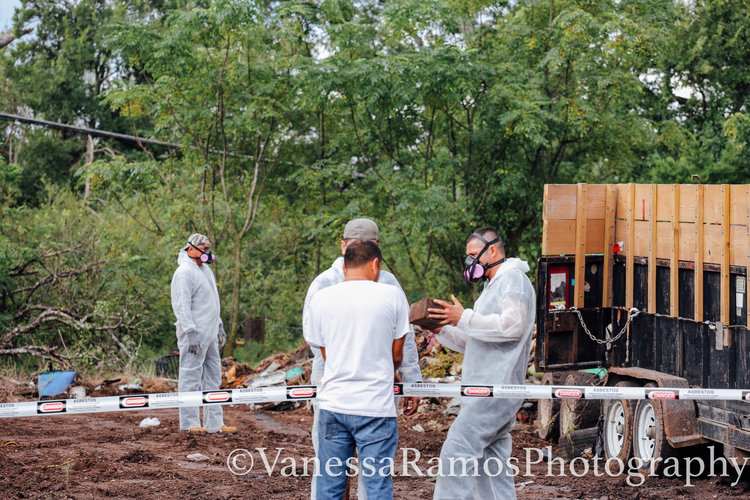
Stephanie Perez, an intern with Council Member Renteria, was out at the Red Bluff site to see the clean up operation.
“I just feel really grateful that I’m going to be a part of the project and really make a difference in what all of the organizations are doing out here,” says Perez. “Having grown up and being from South Austin it’s amazing to get a different perspective of the city,”
The Red Bluff vista offers a breathtaking panoramic view of the Austin skyline, and is located behind the city-owned facility at 6301 Harold Court just West of 183. The property is owned by the Watershed Department and Public Works Department.
Phase 1 of the cleanup was set to be finished by the end of the week. This was led by Mary Jo Fear and Christine Whitney of Austin Resource Recovery.
Although the clean up of Red Bluff is a huge victory, the work is not yet over for SANA and ATXEJ. They would like to see the site designated as a natural area so it can be preserved for this community and for generations to come. This means reaching out to other stakeholders in the community to envision what that looks like, and then advocating at City Hall to make it a reality.
On Saturday April 9th, Austin Environmental Justice Team (ATX EJ) and Springdale-Airport Neighborhood Association (SANA) hosted a community hike from the Walnut Creek Hike & Bike Trail to Harold Court off Hwy 183. This route went north up the East Boggy Creek Greenbelt to the Capital Metro railroad tracks. The route then continued east on the south side of the tracks, up to Fort Branch Creek under the railroad track bridge and across the creek uphill to the edge of Red Bluff.
The beginning of this hike people saw the conditions and different pathways Eastside Memorial High School students have had to use to get to school for decades. The path crosses back and forth over and/or under the railroad tracks. In some cases students have to jump over and/or crawl under railroad cars. Also, in some places students have to travel through flooded areas, toxic water, hazardous materials and trash. One can only question, why is this an acceptable way to get to school to get an education in Austin? It is also important to note that this neighborhood has been labeled part of the fastest growing, fastest gentrifying neighborhoods in America, a.k.a. East Austin.
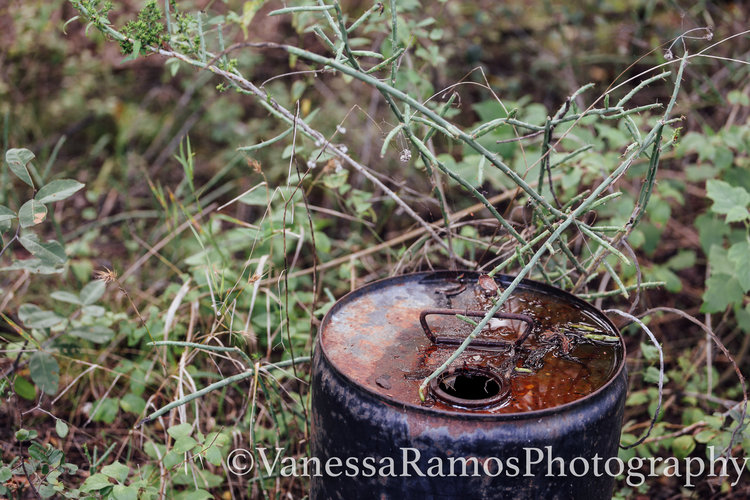
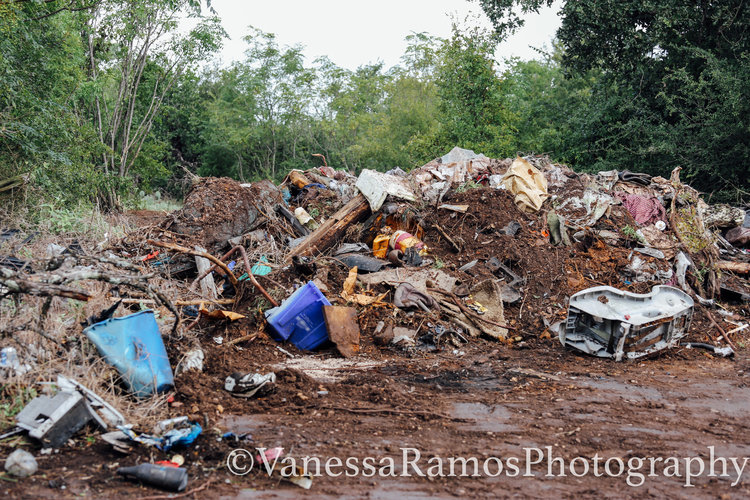
East along the Capital Metro railroad tracks hikers were able to see the site where Austin Energy’s new community solar panel facility will be built. ATX EJ and SANA wanted to bring attention to the issues this facility brings to east austin residents. This facility does not come from the standpoint of affordability, with additional fees such as $25.00 (currently being debated) for customers that will have to add on top of what they already pay for their generated electricity if these residents want to subscribe to solar energy. This facility will be built in their neighborhood regardless if they can afford it. This project might bring solar energy to Austin, but it won’t benefit low-income people of color that make up this area where this solar facility will be built.
Beauty filled this area in the East Boggy Creek Greenbelt but also showed what students and this community face if they decide to explore this open green space that belongs to their area. The hike ended on the Red Bluff Cliff where mounds of illegal dumping and hazardous materials filled this area but also holds a east panoramic view of downtown Austin.
Conversations of environmental justice, affordability, equity, transportation for ESMHS students and owners of this property are still being discussed. You can also help out by calling, emailing your city council member and most importantly visit this site and take pictures and send it to 311 to keep building momentum to restore this beautiful area and support Austin’s most historic and authentic neighborhoods.
